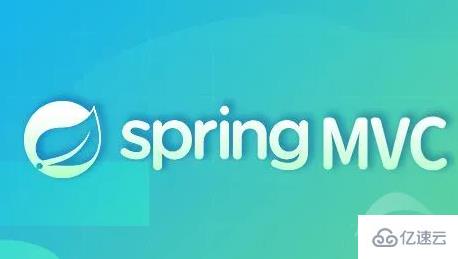今天小编给大家分享一下Spring MVC的原理是什么的相关知识点,内容详细,逻辑清晰,相信大部分人都还太了解这方面的知识,所以分享这篇文章给大家参考一下,希望大家阅读完这篇文章后有所收获,下面我们一起来了解一下吧。
SpringMVC是一种基于Spring实现了Web MVC设计模式的请求驱动类型的轻量级Web框架,使用了MVC的架构模式思想,将Web层进行指责解耦,并管理应用所需的生命周期,为简化日常开发,提供了很大便利。

在上一篇文章中,我向大家介绍了 Spring MVC 是如何处理 HTTP 请求的。Spring MVC 可对外提供服务时,说明其已经处于了就绪状态。再次之前,Spring MVC 需要进行一系列的初始化操作。正所谓兵马未动,粮草先行。这些操作包括创建容器,加载 DispatcherServlet 中用到的各种组件等。本篇文章就来和大家讨论一下这些初始化操作中的容器创建操作,容器的创建是其他一些初始化过程的基础。那其他的就不多说了,我们直入主题吧。
一般情况下,我们会在一个 Web 应用中配置两个容器。一个容器用于加载 Web 层的类,比如我们的接口 Controller、HandlerMapping、ViewResolver 等。在本文中,我们把这个容器叫做 web 容器。另一个容器用于加载业务逻辑相关的类,比如 service、dao 层的一些类。在本文中,我们把这个容器叫做业务容器。在容器初始化的过程中,业务容器会先于 web 容器进行初始化。web 容器初始化时,会将业务容器作为父容器。这样做的原因是,web 容器中的一些 bean 会依赖于业务容器中的 bean。比如我们的 controller 层接口通常会依赖 service 层的业务逻辑类。
下面举个例子进行说明:
我们将 dao 层的类配置在 application-dao.xml 文件中,将 service 层的类配置在 application-service.xml 文件中。然后我们将这两个配置文件通过 标签导入到 application.xml 文件中。此时,我们可以让业务容器去加载 application.xml 配置文件即可。另一方面,我们将 Web 相关的配置放在 application-web.xml 文件中,并将该文件交给 Web 容器去加载。
这里我们把配置文件进行分层,结构上看起来清晰了很多,也便于维护。这个其实和代码分层是一个道理,如果我们把所有的代码都放在同一个包下,那看起来会多难受啊。同理,我们用业务容器和 Web 容器去加载不同的类也是一种分层的体现吧。当然,如果应用比较简单,仅用 Web 容器去加载所有的类也不是不可以。
前面说了一些背景知识作为铺垫,那下面我们开始分析容器的创建过程吧。按照创建顺序,我们先来分析业务容器的创建过程。业务容器的创建入口是 ContextLoaderListener 的 contextInitialized 方法。顾名思义,ContextLoaderListener 是用来监听 ServletContext 加载事件的。当 ServletContext 被加载后,监听器的 contextInitialized 方法就会被 Servlet 容器调用。ContextLoaderListener Spring 框架提供的,它的配置方法如下:
org.springframework.web.context.ContextLoaderListener
contextConfigLocationclasspath:application.xml如上,ContextLoaderListener 可通过 ServletContext 获取到 contextConfigLocation 配置。这样,业务容器就可以加载 application.xml 配置文件了。那下面我们来分析一下 ContextLoaderListener 的源码吧。
public class ContextLoaderListener extends ContextLoader implements ServletContextListener {
// 省略部分代码
@Override
public void contextInitialized(ServletContextEvent event) {
// 初始化 WebApplicationContext
initWebApplicationContext(event.getServletContext());
}
}
public WebApplicationContext initWebApplicationContext(ServletContext servletContext) {
/*
* 如果 ServletContext 中 ROOT_WEB_APPLICATION_CONTEXT_ATTRIBUTE 属性值
* 不为空时,表明有其他监听器设置了这个属性。Spring 认为不能替换掉别的监听器设置
* 的属性值,所以这里抛出异常。
*/if (servletContext.getAttribute(WebApplicationContext.ROOT_WEB_APPLICATION_CONTEXT_ATTRIBUTE) != null) {
throw new IllegalStateException("Cannot initialize context because there is already a root application context present - " +"check whether you have multiple ContextLoader* definitions in your web.xml!");
}
Log logger = LogFactory.getLog(ContextLoader.class);
servletContext.log("Initializing Spring root WebApplicationContext");if (logger.isInfoEnabled()) {...}
long startTime = System.currentTimeMillis();
try {if (this.context == null) {
// 创建 WebApplicationContext
this.context = createWebApplicationContext(servletContext);
}if (this.context instanceof ConfigurableWebApplicationContext) {
ConfigurableWebApplicationContext cwac = (ConfigurableWebApplicationContext) this.context;if (!cwac.isActive()) {if (cwac.getParent() == null) {
/*
* 加载父 ApplicationContext,一般情况下,业务容器不会有父容器,
* 除非进行配置
*/
ApplicationContext parent = loadParentContext(servletContext);
cwac.setParent(parent);
}
// 配置并刷新 WebApplicationContext
configureAndRefreshWebApplicationContext(cwac, servletContext);
}
}
// 设置 ApplicationContext 到 servletContext 中
servletContext.setAttribute(WebApplicationContext.ROOT_WEB_APPLICATION_CONTEXT_ATTRIBUTE, this.context);
ClassLoader ccl = Thread.currentThread().getContextClassLoader();if (ccl == ContextLoader.class.getClassLoader()) {
currentContext = this.context;
}else if (ccl != null) {
currentContextPerThread.put(ccl, this.context);
}if (logger.isDebugEnabled()) {...}if (logger.isInfoEnabled()) {...}return this.context;
}
catch (RuntimeException ex) {
logger.error("Context initialization failed", ex);
servletContext.setAttribute(WebApplicationContext.ROOT_WEB_APPLICATION_CONTEXT_ATTRIBUTE, ex);
throw ex;
}
catch (Error err) {
logger.error("Context initialization failed", err);
servletContext.setAttribute(WebApplicationContext.ROOT_WEB_APPLICATION_CONTEXT_ATTRIBUTE, err);
throw err;
}
}如上,我们看一下上面的创建过程。首先 Spring 会检测 ServletContext 中 ROOT_WEB_APPLICATION_CONTEXT_ATTRIBUTE 属性有没有被设置,若被设置过,则抛出异常。若未设置,则调用 createWebApplicationContext 方法创建容器。创建好后,再调用 configureAndRefreshWebApplicationContext 方法配置并刷新容器。最后,调用 setAttribute 方法将容器设置到 ServletContext 中。经过以上几步,整个创建流程就结束了。流程并不复杂,可简单总结为创建容器 → 配置并刷新容器 → 设置容器到 ServletContext 中。这三步流程中,最后一步就不进行分析,接下来分析一下第一步和第二步流程对应的源码。如下:
protected WebApplicationContext createWebApplicationContext(ServletContext sc) {
// 判断创建什么类型的容器,默认类型为 XmlWebApplicationContext
Class> contextClass = determineContextClass(sc);if (!ConfigurableWebApplicationContext.class.isAssignableFrom(contextClass)) {
throw new ApplicationContextException("Custom context class [" + contextClass.getName() +"] is not of type [" + ConfigurableWebApplicationContext.class.getName() + "]");
}
// 通过反射创建容器return (ConfigurableWebApplicationContext) BeanUtils.instantiateClass(contextClass);
}
protected Class> determineContextClass(ServletContext servletContext) {
/*
* 读取用户自定义配置,比如:
*
* contextClass * XXXConfigWebApplicationContext *
*/
String contextClassName = servletContext.getInitParameter(CONTEXT_CLASS_PARAM);if (contextClassName != null) {
try {return ClassUtils.forName(contextClassName, ClassUtils.getDefaultClassLoader());
}
catch (ClassNotFoundException ex) {
throw new ApplicationContextException("Failed to load custom context class [" + contextClassName + "]", ex);
}
}else {
/*
* 若无自定义配置,则获取默认的容器类型,默认类型为 XmlWebApplicationContext。
* defaultStrategies 读取的配置文件为 ContextLoader.properties,
* 该配置文件内容如下:
* org.springframework.web.context.WebApplicationContext =
* org.springframework.web.context.support.XmlWebApplicationContext
*/
contextClassName = defaultStrategies.getProperty(WebApplicationContext.class.getName());
try {return ClassUtils.forName(contextClassName, ContextLoader.class.getClassLoader());
}
catch (ClassNotFoundException ex) {
throw new ApplicationContextException("Failed to load default context class [" + contextClassName + "]", ex);
}
}
}简单说一下 createWebApplicationContext 方法的流程,该方法首先会调用 determineContextClass 判断创建什么类型的容器,默认为 XmlWebApplicationContext。然后调用 instantiateClass 方法通过反射的方式创建容器实例。instantiateClass 方法就不跟进去分析了,大家可以自己去看看,比较简单。
继续往下分析,接下来分析一下 configureAndRefreshWebApplicationContext 方法的源码。如下:
protected void configureAndRefreshWebApplicationContext(ConfigurableWebApplicationContext wac, ServletContext sc) {if (ObjectUtils.identityToString(wac).equals(wac.getId())) {
// 从 ServletContext 中获取用户配置的 contextId 属性
String idParam = sc.getInitParameter(CONTEXT_ID_PARAM);if (idParam != null) {
// 设置容器 id
wac.setId(idParam);
}else {
// 用户未配置 contextId,则设置一个默认的容器 id
wac.setId(ConfigurableWebApplicationContext.APPLICATION_CONTEXT_ID_PREFIX +
ObjectUtils.getDisplayString(sc.getContextPath()));
}
}
wac.setServletContext(sc);
// 获取 contextConfigLocation 配置
String configLocationParam = sc.getInitParameter(CONFIG_LOCATION_PARAM);if (configLocationParam != null) {
wac.setConfigLocation(configLocationParam);
}
ConfigurableEnvironment env = wac.getEnvironment();if (env instanceof ConfigurableWebEnvironment) {
((ConfigurableWebEnvironment) env).initPropertySources(sc, null);
}
customizeContext(sc, wac);
// 刷新容器
wac.refresh();
}上面的源码不是很长,逻辑不是很复杂。下面简单总结 configureAndRefreshWebApplicationContext 方法主要做了事情,如下:
设置容器 id 获取 contextConfigLocation 配置,并设置到容器中 刷新容器 到此,关于业务容器的创建过程就分析完了,下面我们继续分析 Web 容器的创建过程。
前面说了业务容器的创建过程,业务容器是通过 ContextLoaderListener。那 Web 容器是通过什么创建的呢?答案是通过 DispatcherServlet。我在上一篇文章介绍 HttpServletBean 抽象类时,说过该类覆写了父类 HttpServlet 中的 init 方法。这个方法就是创建 Web 容器的入口,那下面我们就从这个方法入手。如下:
// -☆- org.springframework.web.servlet.HttpServletBean
public final void init() throws ServletException {if (logger.isDebugEnabled()) {...}
// 获取 ServletConfig 中的配置信息
PropertyValues pvs = new ServletConfigPropertyValues(getServletConfig(), this.requiredProperties);if (!pvs.isEmpty()) {
try {
/*
* 为当前对象(比如 DispatcherServlet 对象)创建一个 BeanWrapper,
* 方便读/写对象属性。
*/
BeanWrapper bw = PropertyAccessorFactory.forBeanPropertyAccess(this);
ResourceLoader resourceLoader = new ServletContextResourceLoader(getServletContext());
bw.registerCustomEditor(Resource.class, new ResourceEditor(resourceLoader, getEnvironment()));
initBeanWrapper(bw);
// 设置配置信息到目标对象中
bw.setPropertyValues(pvs, true);
}
catch (BeansException ex) {if (logger.isErrorEnabled()) {...}
throw ex;
}
}
// 进行后续的初始化
initServletBean();if (logger.isDebugEnabled()) {...}
}
protected void initServletBean() throws ServletException {
}上面的源码主要做的事情是将 ServletConfig 中的配置信息设置到 HttpServletBean 的子类对象中(比如 DispatcherServlet),我们并未从上面的源码中发现创建容器的痕迹。不过如果大家注意看源码的话,会发现 initServletBean 这个方法稍显奇怪,是个空方法。这个方法的访问级别为 protected,子类可进行覆盖。HttpServletBean 子类 FrameworkServlet 覆写了这个方法,下面我们到 FrameworkServlet 中探索一番。
// -☆- org.springframework.web.servlet.FrameworkServlet
protected final void initServletBean() throws ServletException {
getServletContext().log("Initializing Spring FrameworkServlet '" + getServletName() + "'");if (this.logger.isInfoEnabled()) {...}
long startTime = System.currentTimeMillis();
try {
// 初始化容器
this.webApplicationContext = initWebApplicationContext();
initFrameworkServlet();
}
catch (ServletException ex) {
this.logger.error("Context initialization failed", ex);
throw ex;
}
catch (RuntimeException ex) {
this.logger.error("Context initialization failed", ex);
throw ex;
}if (this.logger.isInfoEnabled()) {...}
}
protected WebApplicationContext initWebApplicationContext() {
// 从 ServletContext 中获取容器,也就是 ContextLoaderListener 创建的容器
WebApplicationContext rootContext =
WebApplicationContextUtils.getWebApplicationContext(getServletContext());
WebApplicationContext wac = null;
/*
* 若下面的条件成立,则需要从外部设置 webApplicationContext。有两个途径可以设置
* webApplicationContext,以 DispatcherServlet 为例:
* 1. 通过 DispatcherServlet 有参构造方法传入 WebApplicationContext 对象
* 2. 将 DispatcherServlet 配置到其他容器中,由其他容器通过
* setApplicationContext 方法进行设置
*
* 途径1 可参考 AbstractDispatcherServletInitializer 中的
* registerDispatcherServlet 方法源码。一般情况下,代码执行到此处,
* this.webApplicationContext 为 null,大家可自行调试进行验证。
*/if (this.webApplicationContext != null) {
wac = this.webApplicationContext;if (wac instanceof ConfigurableWebApplicationContext) {
ConfigurableWebApplicationContext cwac = (ConfigurableWebApplicationContext) wac;if (!cwac.isActive()) {if (cwac.getParent() == null) {
// 设置 rootContext 为父容器
cwac.setParent(rootContext);
}
// 配置并刷新容器
configureAndRefreshWebApplicationContext(cwac);
}
}
}if (wac == null) {
// 尝试从 ServletContext 中获取容器
wac = findWebApplicationContext();
}if (wac == null) {
// 创建容器,并将 rootContext 作为父容器
wac = createWebApplicationContext(rootContext);
}if (!this.refreshEventReceived) {
onRefresh(wac);
}if (this.publishContext) {
String attrName = getServletContextAttributeName();
// 将创建好的容器设置到 ServletContext 中
getServletContext().setAttribute(attrName, wac);if (this.logger.isDebugEnabled()) {...}
}return wac;
}
protected WebApplicationContext createWebApplicationContext(ApplicationContext parent) {
// 获取容器类型,默认为 XmlWebApplicationContext.class
Class> contextClass = getContextClass();if (this.logger.isDebugEnabled()) {...}if (!ConfigurableWebApplicationContext.class.isAssignableFrom(contextClass)) {
throw new ApplicationContextException("Fatal initialization error in servlet with name '" + getServletName() +"': custom WebApplicationContext class [" + contextClass.getName() +"] is not of type ConfigurableWebApplicationContext");
}
// 通过反射实例化容器
ConfigurableWebApplicationContext wac =
(ConfigurableWebApplicationContext) BeanUtils.instantiateClass(contextClass);
wac.setEnvironment(getEnvironment());
wac.setParent(parent);
wac.setConfigLocation(getContextConfigLocation());
// 配置并刷新容器
configureAndRefreshWebApplicationContext(wac);return wac;
}
protected void configureAndRefreshWebApplicationContext(ConfigurableWebApplicationContext wac) {if (ObjectUtils.identityToString(wac).equals(wac.getId())) {
// 设置容器 idif (this.contextId != null) {
wac.setId(this.contextId);
}else {
// 生成默认 id
wac.setId(ConfigurableWebApplicationContext.APPLICATION_CONTEXT_ID_PREFIX +
ObjectUtils.getDisplayString(getServletContext().getContextPath()) + '/' + getServletName());
}
}
wac.setServletContext(getServletContext());
wac.setServletConfig(getServletConfig());
wac.setNamespace(getNamespace());
wac.addApplicationListener(new SourceFilteringListener(wac, new ContextRefreshListener()));
ConfigurableEnvironment env = wac.getEnvironment();if (env instanceof ConfigurableWebEnvironment) {
((ConfigurableWebEnvironment) env).initPropertySources(getServletContext(), getServletConfig());
}
// 后置处理,子类可以覆盖进行一些自定义操作。在 Spring MVC 未使用到,是个空方法。
postProcessWebApplicationContext(wac);
applyInitializers(wac);
// 刷新容器
wac.refresh();
}以上就是创建 Web 容器的源码,下面总结一下该容器创建的过程。如下:
从 ServletContext 中获取 ContextLoaderListener 创建的容器 若 this.webApplicationContext != null 条件成立,仅设置父容器和刷新容器即可 尝试从 ServletContext 中获取容器,若容器不为空,则无需执行步骤4 创建容器,并将 rootContext 作为父容器 设置容器到 ServletContext 中 到这里,关于 Web 容器的创建过程就讲完了。总的来说,Web 容器的创建过程和业务容器的创建过程大致相同,但是差异也是有的,不能忽略。
以上就是“Spring MVC的原理是什么”这篇文章的所有内容,感谢各位的阅读!相信大家阅读完这篇文章都有很大的收获,小编每天都会为大家更新不同的知识,如果还想学习更多的知识,请关注亿速云行业资讯频道。
亿速云「云服务器」,即开即用、新一代英特尔至强铂金CPU、三副本存储NVMe SSD云盘,价格低至29元/月。点击查看>>
免责声明:本站发布的内容(图片、视频和文字)以原创、转载和分享为主,文章观点不代表本网站立场,如果涉及侵权请联系站长邮箱:is@yisu.com进行举报,并提供相关证据,一经查实,将立刻删除涉嫌侵权内容。